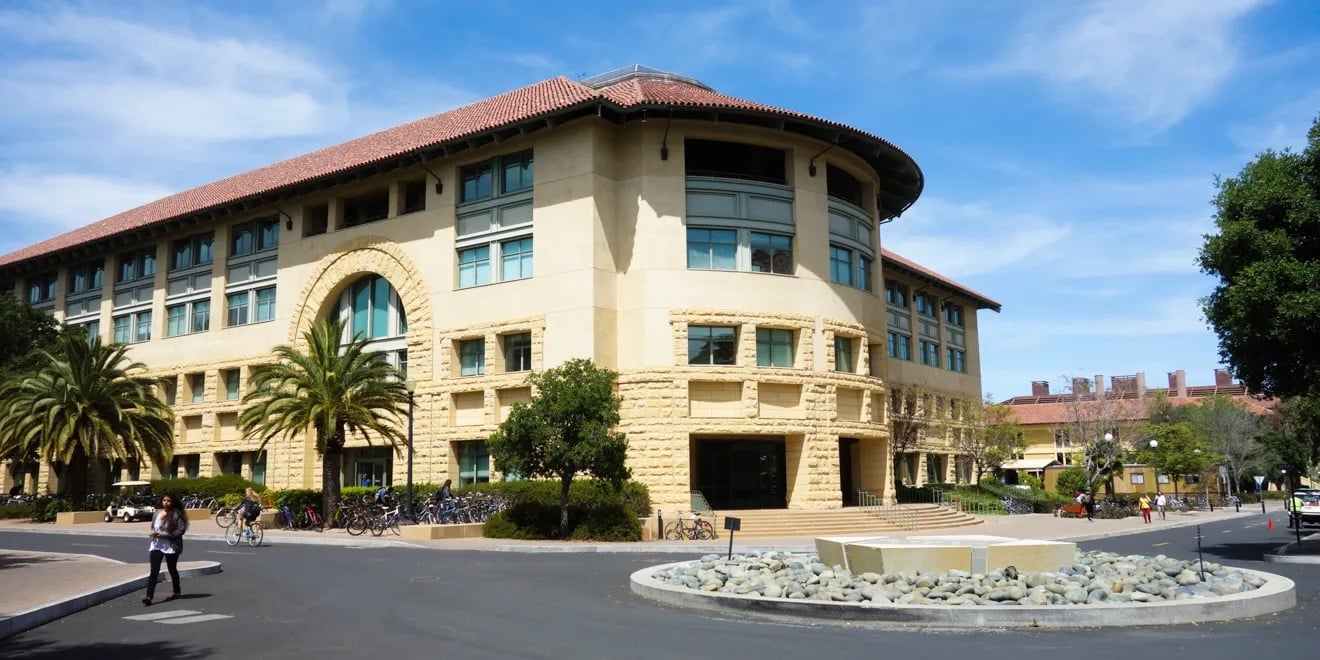Two new STEM classes piloted under a student initiative are bridging the education inequity gap at Stanford. Students say the classes are setting them up for success in their fields.
Daily reporter and former undergraduate senator Cayla Withers ’25 authored a resolution two years ago to provide funding for accessible introductory STEM courses. The bill focused on helping departments create supplemental courses to give students extra support prior to, or concurrent with, traditional introductory STEM courses — creating “on-ramps” to STEM disciplines. The resolution’s sponsors included undergraduates Maryam Tsegaye ’25 and Sinna Nick ’25, as well as members of the Graduate Student Council, Undergraduate Senate and mechanical engineering department.
The process of moving the bill from resolution to implementation took nearly a year. First introduced in May 2022, the resolution passed in the Graduate Student Council in December 2022 and in the Undergraduate Senate in January 2023. Two courses, PHYSICS 41E and CHEM 11, were first introduced in the spring of 2023.
The resulting on-ramp courses, PHYSICS 41E: “Mechanics, Concepts, Calculations, and Context” and CHEM 11: “Foundational Concepts and Study Skills for General Chemistry,” have now matriculated over a hundred students and opened doors to STEM fields for many.
This quarter, 97 students are enrolled in PHYSICS 41E. Cristofer Acosta ’26 took the course in the winter of his sophomore year.
PHYSICS 41E is an extended version of the traditional PHYSICS 41: “Mechanics” and covers identical material with extra class time and additional supplementary support. It fulfills the same prerequisites as PHYSICS 41, allowing students with little to no high school background in physics to complete introductory prerequisites on the same timeline as their peers. Ninety-seven students are enrolled in PHYSICS 41E this quarter.

Acosta said the structured assignments helped him prepare for future STEM courses.
“In CS 109, I’ve been using a similar template,” Acosta said. “Although the questions for CS 109 are completely different from PHYSICS 41E, I think [using] a similar approach has helped me.”
Students in PHYSICS 41E were given a template to structure their lab work and problem sets, which provided more scaffolding for the projects.
“For someone like me, who comes from an under-resourced high school, and didn’t have the correct resources or experiences in physics courses, I found [the template] really useful,” Acosta said.
The template was based on work on engineering education by Carl Wieman Ph.D. ’77, a Stanford professor of physics and education and Nobel laureate. Acosta said the lab work template is “incredibly helpful to this day, and that’s how I approach a lot of assignments and do well on my current p-sets.”
Ruby Jewett ’27 was one of many students whose high school physics education was interrupted by the COVID-19 pandemic. She enrolled in PHYSICS 41E this quarter.
Although PHYSICS 41E “definitely had a steep [learning curve],” Jewett believes the course’s focus on working through problems instead of lecture material is preparing her well for future classes in STEM, she said.
“There’s a lot of support from the teaching team and other students to work through stuff and understand the material without being told a specific formula or something, which I feel like is very helpful for understanding,” Jewett said.
According to Withers, the idea came from a conversation she, Sinna Nick ‘25 and Maryam Tsegaye ‘25 had with physics and mechanical engineering Professor Paul Mitiguy M.S. ’87, Ph.D. ’95 during office hours for PHYSICS 40, the previous on-ramp physics course first offered in the winter of 2021. Withers said they discussed how more comprehensive on-ramp STEM courses could make the transition to collegiate level STEM classes easier for many students.
Withers drafted a resolution for the Undergraduate Senate that set aside funding for introductory STEM courses geared toward students without a strong background in these areas. The bill stated that “students have systemic barriers to entry to a major of their choosing when they are expected to have foundational knowledge and skill in entry-level STEM courses (e.g., Physics 41, Chemistry 31, CS106A).”
In addition to providing funding for STEM on-ramp courses, the bill requested that all departments consider the courses for degree progress and that departments regularly “deploy committed instructors who have demonstrated prior interest and ability in teaching and student interaction” to evaluate “the ongoing success of their courses and their students’ progress in subsequent follow-on courses.”
For Withers, the origin of the bill was personal.
“I come from an under-resourced high school, and because of that I feel like I didn’t have proper preparation for some of the STEM courses [at Stanford]” Withers said. In conversations with peers, she was disheartened to learn that many other students from under-resourced high schools were going on to major in other fields, despite initially wanting to pursue STEM.
“I knew if I fought for something like this, it would be easier, not only for me, but for people coming behind me,” she added.
CHEM 11 covers material reviewed briefly at the start of CHEM 31A: “Chemical Principles I,” like unit conversions and balancing equations. The course also offers mentor groups that support students through the transition to CHEM 31A. CHEM 11 will be offered again this spring.
For Withers, creating the on-ramp STEM courses is only one step toward expanding accessibility in education. Prior to the passage of the bill, Withers noticed many professors in STEM classes who “didn’t have grace” for students who were new to the topic and required extra support. She hopes to “open [the departments’] minds and their hearts to [reforms], because we believe that this can bring a lot of change for future generations to come.”
Withers said she wants future students to know that “if they come here and they have a dream to be an engineer, to be the next greatest scientist, that they can accomplish that dream, and nothing will be in their way to stop them.”
This article was updated to include the names of the resolution’s sponsors.
